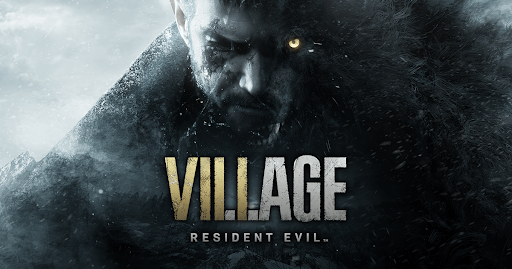Resident Evil Village: Game Review

The Resident Evil series is back with a new vision of horror. After several remakes, and reaching its possible creative low with Resident Evil 6, Resident Evil 7, released in 2017, represented the return of the horror roots of the series while reinventing itself with a first-person perspective. So, since 2017, since Resident Evil 7, Capcom has launched a phenomenal remake of Resident Evil 2.
Resident Evil Village has been released with a logo styled in such a way that gamers ought to know that it is Resident Evil 8, even though Capcom hasn’t explicitly named it as such. It’s certainly a sequel to RE7, going by the same first-person perspective and bland protagonist, Ethan Winters. While RE7 evoked the slow-burning housebound horror of the original game, Resident Evil Village is more of a first-person perspective on arguably the series’ highest point: Resident Evil 4.
The Basic Storyline
In Resident Evil Village, we catch up with RE7 protagonist Ethan Winter, who has settled down to a life of peace with Mia and is raising their newborn baby after the terrors they witnessed at the Baker estate. But when the series hero, Chris Redfield, comes knocking on their door, Ethan is thrust back into the world of bio-weapons and the monstrosities those weapons create. He finds himself in a hostile village populated by savage werewolf-adjacent people and sets out to find his daughter.
Chris Redfield shows up at Ethan’s place and murders his wife and kidnaps both him and his daughter. The vehicle in which they are being transported crashes, leading a dazed Winters to wander through the woods for a while, before appearing at an abandoned ghost town with a heavy Transylvanian influence.
As soon as you walk into the deserted Village, you are set upon by rabid mutated wolf-like creatures known as Lycans, and from then on, things only get worse as you bravely endure these hair-raising horrors in a bid to locate your daughter Rosemary.
The Miranda Squad
The Village is a fairly open space that you explore in the daytime, solving environmental puzzles in order to unlock further areas. It gets a little confusing while navigating at first, but you quickly figure out that its main function is to serve as a hub from which you set out to take down four lords in thrall to a mysterious figure known as Mother Miranda.
Miranda and her four henchmen are all really intriguing in their own unique ways, and most of them are quite fleshed out as characters. Their introduction in the game instantly elevates the experience, and their interactions with the protagonist and each other do a great job of setting up the mythos of the game.
Lady Dimitrescu and her daughters are some of the highlights of Resident Evil Village
One of the most striking locations is Castle Dumitrescu, which is home to a nine-foot-tall Lady Dumitrescu, who stalks you around the place in a similar fashion to prior Resident Evil villains like Nemesis. Castle Dumitrescu is a classic Resident Evil piece, and the game settles into a familiar rhythm of light puzzles, locked doors, and little-by-little progression as you uncover more of the map.
However, unlike the structure in Resident Evil 7, it is unlikely to be frightening because the RE: Village focuses on action rather than trickling horror. There’s only so much tension that you can build up when you’re using your shotgun this often. And that holds for most of the rest of the game, as you travel to new areas that largely serve as theatrical preludes to showdowns with Miranda’s other followers.
Each of Miranda’s followers is, in effect, a boss-level character. All four of them have their own separate areas in the game which you will be permitted to explore sequentially. As we already established, Lady Dimitrescu can be found in the opulent Dimitrescu castle, while Karl Heisenberg resides in a grimy factory, and Benevento is located in an old rundown house in a misty valley. Moreau is supposedly more fish than human, and perhaps he has the most interesting abode, a reservoir in which he can supersize himself into a salamander-fish hybrid.
Cassandra, Moroaica, and the Monstrous Grunts
Moroaica, one of the creatures you shoot at in Resident Evil: Village
Resident Evil: Village is technically not a third-person shooter, but it sure does give you an assembly of mythical creatures to shoot at. There are a whole lot of monsters that attack you, ranging from werewolves to zombies, and they’re all different from each other, sufficiently justifying their existence in the game. As an example, the Lycans are faster and harder to hit, and the Moroaica is slow, but they make up for it with screeching in numbers.
There are several mini-bosses that you can fight, amongst which the most notable is Lady Dimitrescu’s three daughters. All three of them have similar weaknesses, so you can sort of defeating them all with the same strategy. However, their entrances are quite memorable, and at least two of the three can startle you when they suddenly appear on the screen.
Overall, none of these creatures poses any serious problems, and most of them can be taken down easily. Early on, enemies will largely approach you either alone or in pairs, but as the game progresses, they will attack in waves, rapidly and more aggressively, transforming the game into a gun-slinging, fast-paced affair.
The boss fights in the Village are among the notable improvements. Most of Resident Evil 7’s fights were frustrating and unsatisfying, but Capcom embraced the spectacle to great effect and amped up the Village’s biggest battles. They’re not necessarily titanic challenges or complex brain-teasers, but they’re at least memorable, and that’s a good start.
Conclusion
The Village has its atmospheric moments, but they aren’t always the main event. There are lengthy sections of the game that are structured more or less like a first-person shooter. The puzzles are generally straightforward, and you’ll rarely find yourself in a situation where you’ll have to fight back against enemies without any arms and means. Sometimes it feels more like something from the Metro series than any of its own predecessors.
The camera angle and basic controls match with RE7, but the tone is notably different right from the start. Instead of tentatively exploring a creepy, atmospheric environment that gradually reveals the horror, you’re thrown right into the pit of action and thrill and are left to fend for yourself against warped antagonists. Quite similar to Resident Evil 4, perhaps.
The Village’s similarities to 4 go further than its breakneck opening and rural European setting. It’s a much more action-oriented game than 7, and you’ll often find yourself taking on several enemies at once. Capcom has also made a lot of quality-of-life tweaks that give the game a breezier feel, from a shortcut that lets you break boxes without equipping your knife to an overhauled inventory system that separates crafting materials from everything else, giving you more space and firepower.
Resident Evil: Village is probably not the longest game you’ll play. It averages a playtime of just over 10 hours, and you can get through much of the storyline in no time. If you take a completionist approach to the game, however, you will most likely take much longer to complete it.
Similar to the other titles in the series, Resident Evil: Village also has Mercenaries Mode, a post-game mode in which you can reattempt large portions of the game with newer, more efficient weapons that allow you to do more damage and play at a higher difficulty level. The Mercenaries throw up new, exciting, and difficult challenges.
Resident Evil Village is a good game and definitely worth playing. But by transparently blending elements of 7 and 4, two of the most dramatic overhauls in series history, it does tend to feel less noteworthy than either. If you’re in it for the outlandish characters and labyrinthine level design, you’ll probably love Resident Evil: Village.

